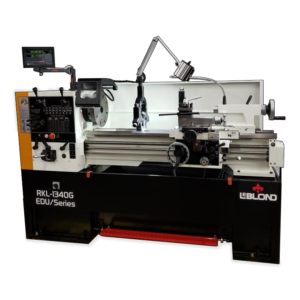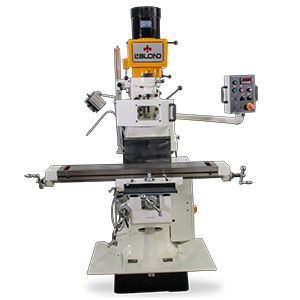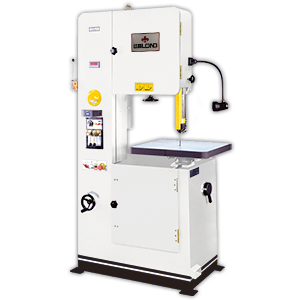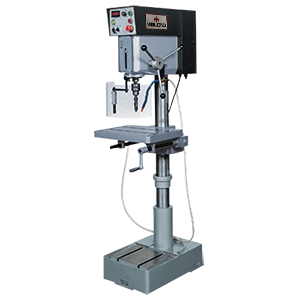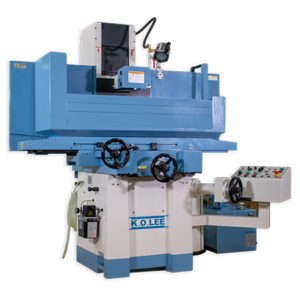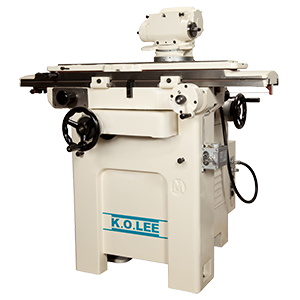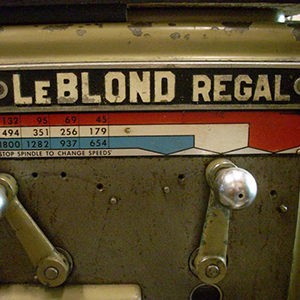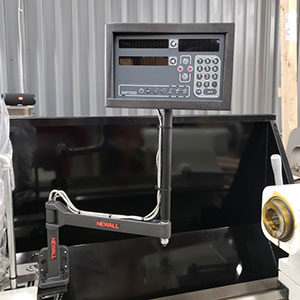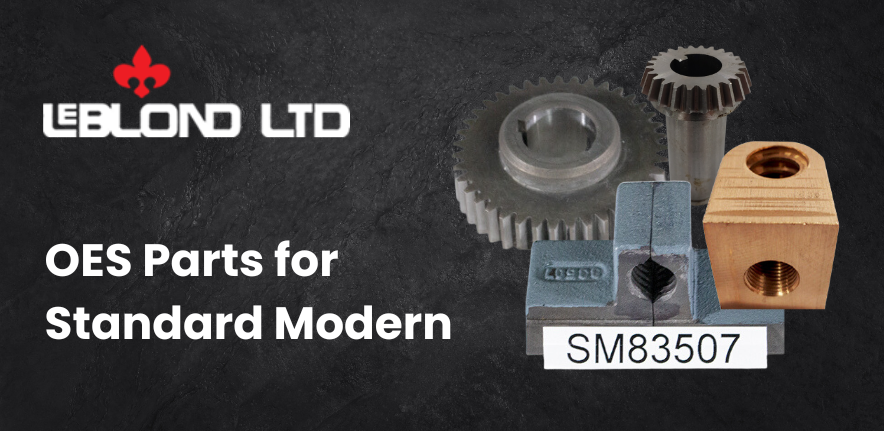Table of Contents
- Contact LeBlond for OES S-M Parts
- The History of Standard Modern & LeBlond
- Need S-M Components?
- Key Standard Modern Maintenance Procedure
- Lubrication on the S-M Series 4000 Lathe
- Helping You Service Vintage S-M Lathes
- KEY TAKEAWAYS
TL;DR
In this blog post, we’ll focus on the history of LeBlond and Standard Modern lathes and discuss how you can secure manuals for your vintage S-M lathes that review key maintenance procedures like lubricating your machine.
LeBlond has grown thanks to its experience and mastery of working with the most sophisticated and accurate equipment in the machine tool sector.
We also recognized that it’s thanks to our collaboration with other manufacturers. We’ve delivered quality and efficient OES parts for non-LeBlond machine tool lines throughout the years.
You can now browse many of these parts via our Inventory Available feature on our website.
Contact LeBlond for OES S-M Parts
One of those manufacturers is Standard Modern. Let’s begin with a summary of how Standard Modern and LeBlond began collaborating.
The History of Standard Modern & LeBlond
Standard Machine & Tool and Modern Tools Works were established in Canada in the early 1930s. In 1955, Staveley Industries, a British company, acquired both companies, creating Standard Modern Tool Company Ltd.
They partnered with Atomic Energy of Canada in the late 1950s to develop fueling machines for Candu nuclear reactors. In the 1970s, they pioneered Canada’s first numerically controlled (NC) lathe and later a computer numerically controlled (CNC) lathe in collaboration with Canadian General Electric.
In 1981, Baxter Technologies acquired Standard Modern Tool Company, renaming it STANDARD MODERN Technologies and introducing the CNC 1420 lathe.
In 1985, this outfit produced a larger CNC lathe with automatic tool changing and in-process gauging. In 1987, employees acquired the company, managing it until 1996, when Peekay Holdings Ltd. took over and rebranded it as Kestrel Machine Tools Inc.
In 1999, LeBlond Ltd. acquired Standard Modern’s service parts business. Today, Standard Modern lathes are widely used across North America in precision machine shops, the military, and educational institutions.
Need S-M Components?
Keep reading to find out how to secure a Standard Modern manual and the specific oil we recommend to lubricate your vintage S-M lathe.
You can find OES S-M parts and other LeBlond family lines on our new online Inventory Available tool.
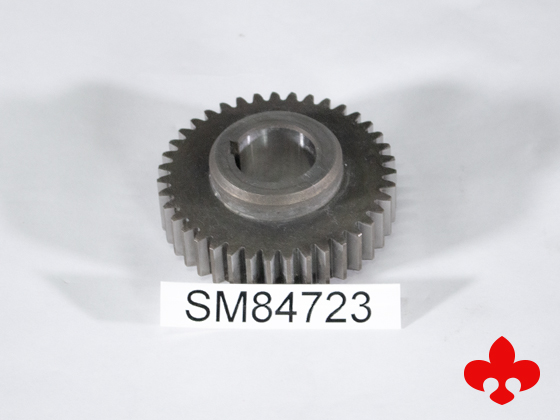
Key S-M Maintenance Procedures
Many machine manuals for vintage machine tools are a marvel for the economy and clarity of the writing.
Standard Modern lathe manuals, of which LeBlond has many originals, are no exception. Many of these manuals clearly discuss vital maintenance procedures to prolong the life of your machine.
We will discuss general maintenance guidelines for the S-M Raised 17” x 30” Series 4000 Lathe. These procedures can apply to other Standard Modern models but always refer to the manual of your specific model for best practices.
Here’s a general maintenance procedure for a vintage Standard Modern lathe:
Daily Inspection and Cleaning:
- Start each day with a visual inspection of the lathe.
- Check for any loose or damaged parts, such as belts, fasteners or toolholders.
- Remove chips, swarf and debris from the lathe bed, carriage and tailstock.
- Wipe down the lathe to remove dust and coolant residue.
Lubrication:
- Refer to your lathe’s manual for the recommended lubrication points and schedule.
- Apply the appropriate lubricants to bearings, gears and other moving parts.
- Make sure the oil and grease used are of the recommended type and viscosity.
Check Belts and Pulleys:
- Examine the condition of belts for wear, cracks or fraying.
- Check tension belts as needed to maintain proper alignment and tension.
- Inspect pulleys for damage and ensure they are properly aligned.
Toolpost and Toolholders:
- Verify the toolpost and toolholders are secure and properly aligned.
- Ensure cutting tools are sharp and in good condition.
- Adjust tool heights and angles as needed for precise machining.
Chuck and Workholding:
- Inspect the chuck jaws for wear and damage.
- Clean the chuck and remove any debris or swarf.
- Check the alignment of workpieces in the chuck.
Tailstock:
- Verify that the tailstock is securely locked in position.
- Check the tailstock center for damage and alignment.
- Lubricate the tailstock’s moving parts.
Electrical Components:
- Inspect electrical cables and connections for wear and damage.
- Check emergency stop buttons and safety interlocks for proper operation.
- Ensure all electrical components are grounded correctly.
Coolant System (If Applicable):
- Maintain the coolant level and ensure proper coolant flow.
- Clean or replace coolant filters as needed.
- Check coolant pumps and hoses for leaks or blockages.
Alignment and Calibration:
- Periodically check and recalibrate the lathe for accuracy.
- Verify the lathe’s alignment, including the tailstock and spindle alignment.
Record Keeping:
- Maintain a maintenance log to record inspections, lubrication and any repairs or adjustments that are made.
- Keep track of tool changes and any issues that arise during machining.
Safety:
- Always follow safety procedures and guidelines while performing maintenance.
- Ensure that guards and safety features are in place and functioning correctly.
Professional Maintenance:
- Schedule regular professional inspections and maintenance, especially if you use the lathe frequently or for heavy-duty work.
- Address any issues or repairs promptly to avoid further damage.
Lubrication On the S-M Series 4000 Lathe
All machines were shipped with the lubricant oil drained from the oil sumps in the headstock, feedbox and apron.
Before filling reservoirs or oil cups, always wipe off any accumulation of old oil, grease or dirt that might get into a part of being lubricated.
HEADSTOCK
The lubrication of the headstock is automatic, so that an even distribution throughout the headstock is assured.
To service the headstock, fill the reservoir to the center of the oil sight gauge through the oil pipe at the left end of the headstock inside the belt guard.
The reservoir capacity of the headstock is inside the belt guard.
The reservoir capacity of the headstock is approximately ten quarts. Depending on operation conditions usually about every six months, the headstock should be drained and thoroughly flushed out, before adding new oil.
A light blending oil to which a small percentage of kerosene has been added may be used to flush out any dirt or sediment. Run the machine for several minutes without load – so that the flushing oil can circulate through the reservoir.
The flushing oil should be then drained and new oil added. The drain pipe is located at the rear of the headstock. Because most solvents tend to soften paints they are not recommended as flushing mediums.
FEEDBOX
The construction of the feedbox completely encloses all moving parts and prevents the entry of dirt and loss of lubricant.
To service the feedbox, fill the reservoir to the center line of the oil sight, utilizing the pipe fittings at the left end of the feedbox inside the belt guard. The capacity of the feedbox reservoir is approximately four quarts.
Using the same method, as with the headstock, the feedbox oil reservoir should be drained, flushed and refilled with fresh, clean oil at least once every six months. The drain plug is located directly below the oil sight.
One grease fitting is located in the handwheel shaft. Grease once a month as indicated on the lubrication plate.
APRON
The box construction of the apron completely encloses all moving parts. The lower half of the apron forms a large oil reservoir in which the gears dip to provide an even distribution of lubricant. Service the apron reservoir through the oil filler above the half-nut lever.
Fill with oil to the center of the oil sight gauge. The reservoir capacity of the apron is approximately two quartz.
The oil level should be checked and replenished daily as the lubricating pump draws its oil from this reservoir in order to lubricate the saddle and cross slide ways.
The amount of oil being distributed to the saddle and cross slide ways is readily controlled by means of the pressure-adjusting screw located immediately below the apron handwheel.
The apron oil reservoir should be drained, flushed and refilled with fresh, clean oil at least once every six months.
SADDLE AND CROSS SLIDE
A built-in pump in the apron lubricates automatically the bearing surfaces of the saddle on the bed; also, the dovetails and bearing surfaces of the cross slide.
The cross-feed screw is lubricated through an oiler in the hexagonal anchor screw in the center of the cross slide.
COMPOUND
On the compound rest, one oil hole lubricates both the ways and the screw.
TAILSTOCK
The spindle and screw are lubricated by two oilers located on top of the spindle housing. The bedways on which the tailstock slides should be cleaned and oiled frequently.
Add dry red lead mixed with machine oil to a creamy consistency. This is an excellent lubricant for the tailstock center when a revolving center is unavailable.
BED AND BRACKET
Two oil cups on the end bracket lubricate individually the end of the leadscrew and the end of the feedshaft. One grease fitting lubricates the end of the control shaft. Before cutting a thread, clean and oil the leadscrew thoroughly.
TAPER ATTACHMENT
Clean and oil the adjustable slide bar before using the taper attachment. Also, apply a few drops of oil in each of the four oilers provided.
Helping You Service Vintage S-M Lathes
LeBlond can help you solve most of your lathe issues and answer your questions about troubleshooting or best practices for your machine. You already know that we work with Standard Modern and that we have a long history with them.
So, we’re happy to share that we sell and recommend the five-gallon buckets of DTE26 mobile oil to service your vintage S-M lathes.
If you are interested in OES S-M parts or need pricing on the DTE26 replacement oil, get in touch to discuss pricing:
- Please leave a comment and we’ll be happy to help.
- Prefer a phone call? Reach out to us at (888) 532-5663 and select Option 1.
We look forward to hearing from you!
💡 KEY TAKEAWAYS
- LeBlond sells manuals for vintage Standard Modern lathes that detail key maintenance procedures.
- Today, Standard Modern lathes are widely used across North America in precision machine shops, the military, and educational institutions.
- We recommend the 5-gallon buckets of DTE26 mobile oil to service your vintage S-M lathes.

